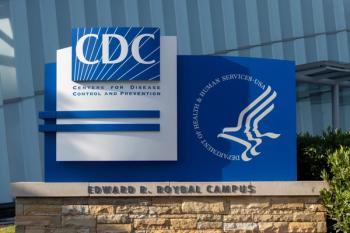
Framework for Equitable Allocation of a COVID-19 Vaccine Released by National Academies
Report recommends using existing systems across all levels of government to provide necessary resources to ensure equitable allocation, distribution, and administration of the COVID-19 vaccine.
The National Academies of Sciences, Engineering, and Medicine released the final report of a consensus study recommending a 4-phased equitable allocation framework that the US Department of Health and Human Services (HHS) and state, tribal, local, and territorial (STLT) authorities should adopt in the development of national and local guidelines for coronavirus disease 2019 (COVID-19) vaccine allocation.
The report recommends using existing systems across all levels of government to provide necessary resources to ensure equitable allocation, distribution, and administration of the COVID-19 vaccine, launching a COVID-19 vaccine promotion campaign and risk communication and engagement program, and supporting equitable allocation globally.
The committee that conducted the study and wrote the report recommended a 4-phase approach to allocation built on widely accepted foundational principles and guided by evidence to maximize societal benefit by reducing morbidity and mortality caused by the transmission of severe acute respiratory syndrome coronavirus 2.
Phase 1a
- Covers approximately 5% of the population and includes frontline health workers, workers who provide health care facility services, and first responders.
- These groups have a critical role in maintaining health care system functionality, high risk of exposure to patients exhibiting symptoms of COVID-19, and higher risk of then transmitting the virus to others, including family members.
Phase 1b
- Covers approximately 10% of the population and includes people of all ages with comorbid and underlying conditions that put them at significantly higher risk of severe COVID-19 disease or death.
- Adults 65 years of age and older living in congregate or overcrowded settings, such as nursing homes or homeless shelters, are included in this phase.
- This group faces joint risk factors of severe disease and reduced resilience associated with advanced age and of acquisition and transmission due to their living situations.
Phase 2
- Covers approximately 30% to 35% of the population and includes K-12 teachers, school staff, and childcare workers who play a role in children’s education and development.
- Critical workers in high-risk settings who cannot avoid a high risk of exposure to COVID-19, people of all ages with comorbid and underlying conditions that put them at moderately higher risk, and populations in homeless shelters or group homes for people with disabilities are also included in this phase.
- All older adults not included in phase 1 should be included in this phase.
Phase 3
- Covers approximately 40% to 45% of the population and includes young adults, children, and workers in industries such as colleges, hotels, and banks.
- There is an increase in the risk of infection and transmission in the younger age groups, which the report notes that broad immunization of children will depend on whether COIVD-19 vaccines have been adequately tested for safety and efficacy in these age groups.
Phase 4
- Covers everyone residing in the United States who did not have access to the vaccine in prior phases.
The committee recommended that STLTs ensure that special efforts are made to deliver the vaccine to residents of high-vulnerability areas by using the CDC’s Social Vulnerability Index or another more specific index, such as the COVID-19 Community Vulnerability Index.
The framework is intended to provide guidance to the STLT authorities for adapting its risk-based criteria to these realities while still maximizing benefit, mitigating health inequities, manifesting equal regard for all, being fair and transparent, and building on the best current evidence.
REFERENCE
National Academies Release Framework for Equitable Allocation of a COVID-19 Vaccine for Adoption by HHS, State, Tribal, Local, and Territorial Authorities. The National Academies of Sciences Engineering Medicine.
Newsletter
Stay informed on drug updates, treatment guidelines, and pharmacy practice trends—subscribe to Pharmacy Times for weekly clinical insights.






















































































































































































































